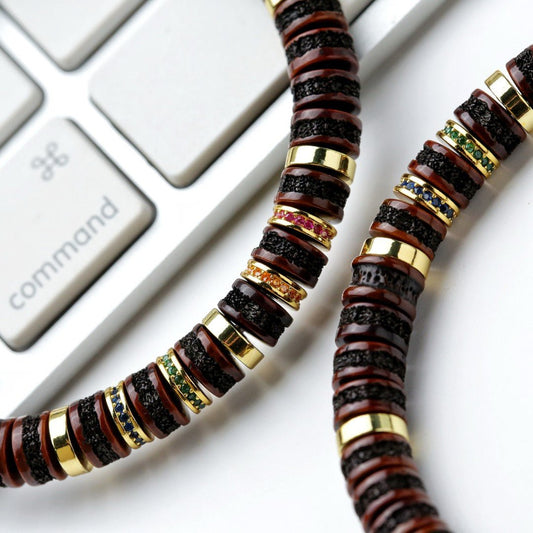
Amid the sophisticated tapestry within Himalayan sacred teachings lie two compelling artifacts: the traditional thangka and bodhi prayer bead. Each, uniquely expressed, facilitates linkages to metaphysical clarity. The thangka, an elaborate depiction, features deities, cosmic designs, or scriptural scenes, supporting mindfulness exercises.
On the other hand, the bodhi bead, often crafted from rare crystals, planks, seeds, or ossein, is a tangible reminder of Buddha's realization under the bodhi tree. Employing the beads assists in mental stillness.
- In unison, the thangka and the bodhi bead manifest the interconnectedness of art and spirituality. They offer a tangible link to the sacred teachings of Tibetan Buddhism.
Tales Whispered by Camel Bone
Throughout historic ages, old treasures whisper tales to a world long faded. These are not luxurious objects originating in bygone empires, but humble camel bones marked with characters that contain the riddles of a bygone period. Each relic contains the echo sprung from a life lived, a journey completed, and a connection to the old wisdom containing which encompasses us all.
- Such objects
- Fragments
- Are
Interpreting the Visual Narratives of Thangka
Tangkas are vibrant paintings on canvas, meticulously crafted by Tibetan artists to depict sacred figures and scenes from Buddhist scriptures. Each detail within a thangka is laden with depth, forming a complex tapestry of visual narratives that guide the viewer on a introspective journey. The hues used in thangkas are not merely aesthetic choices but carry meaningful connotations, embodying different aspects of the Buddhist practice. From the solemn figures to the intricate designs, thangkas offer a peek into the rich world of Tibetan Buddhism, inviting us to consider upon its truths.
- Authentic thangka art often depicts key Buddhist figures such as Buddha Shakyamuni, Bodhisattvas like Avalokiteshvara and Manjushri, and enlightened beings from various orders of Tibetan Buddhism.
- Throughout these representations lies a wealth of understanding that can be unlocked by those who investigate the symbolic language of thangkas.
The Buddha's Path to Enlightenment: Embodied in Beads and Bone
Upon the winding way to enlightenment, the Buddha wielded tokens imbued with profound importance. Every bead and component held within them the heart of his instruction, presenting glimpses into the form of reality. Using their configuration, the Buddha expressed profound insights that surpass the realm of ordinary perception.
From specific reflective beads, crafted from exotic materials, emerged vibrations that harmonized with the subtle powers within. The material of a sentient, meticulously transformed into talismans, served as tangible symbols of the impermanence basic to all forms.
Thangkas: Windows into Himalayan Spirituality
Thangkas glowing paintings on cloth serve as effective representations of Himalayan spirituality. These intricate works of art, meticulously created with delicate brushstrokes, depict a vast array comprising Buddhist deities, mandalas, and scenes from historic scriptures. Each thangka is a profound portal for meditation and contemplation, offering cognition into the complex teachings of Buddhism.
- They are often used in ritual ceremonies in the context of
- inspiring states of spiritual awakening.
- Thangkas serve as not merely decorative objects but rather pathways into the rich and compelling world of Himalayan spiritual traditions.
The Essence of Bodhi Beads: Cultivating Mindfulness and Compassion
Each item on a bodhi bead mala whispers tales of ancient wisdom, guiding us on a passage through the tranquil waters of mindfulness. As we grasp these intricately formed beads, our fingers trace the contours of single one, anchoring our mind in the present moment. The gentle mass of the beads against our palms serves as a tangible reminder to practice respiration, fostering a sense of tranquility.
- At each bead that passes between our fingers, we promote compassion, extending it first to ourselves and then outward to the world.
- Buddhism teaches us that mindfulness is a art form that requires patience and perseverance.
Using the rhythmic repetition of mantra or simply the mindful tallying of the beads, we unshackle from the relentless chatter of the mind.
The practice involving bodhi beads is a gentle invitation to restore our connection with ourselves and the world around us.
Harnessing the Energy: Weaving a Camel Bone Bracelet for Spiritual Expansion
Focus represents a compelling drive in our lives, shaping our experiences and guiding us towards our intended direction. When we combine this intention with the venerable truths of crafting a camel bone bracelet, we create a potent synergy that can boost our spiritual growth.Camel bone exudes mystical power, representing sturdiness. Its natural beauty and vintage attractiveness serve as a constant reminder of the essential might within each of us.Once bones are chosen with care, flow affirmations into the bracelet. With every knot or join, we integrate our hopes, dreams, and aspirations for spiritual evolution. This act of creation becomes a reflective routine, uniting us with our inner wisdom and guiding us on a quest for enlightenment.- Observe how the shade and grain complement your purpose.
- Project your aims as you bind each component.
- Charge the completed bracelet under the moonlight or sunlight to amplify its energetic properties.
Camel Bone's Role in Buddhist Iconography
In the rich tapestry surrounding Buddhist tradition, artifacts often hold profound symbolic meaning. Within these varied objects, camel bone stands out as a unusual and compelling element. Throughout history, this material has been exploited in the crafting during various Buddhist implements, each imbued with specific symbolisms.
- Regarded as a symbol of resilience and strength due to the camel's ability to persist in harsh environments, camel bone often reflects spiritual fortitude.
- Coupled with, the color and texture relative to camel bone are believed with some to hold auspicious connotations, manifesting purity and serenity.
Wherefore, camel bone has become a meaningful part of Buddhist folklore, serving as a tangible nexus to the profound teachings transmitted through this ancient faith.
Thangka Paintings: A Tapestry of Divine Stories
Within the ethereal realm of Tibetan Buddhism, Thangka paintings emerge as sacred portals to enlightenment. These captivating works, meticulously crafted by skilled artists known as thangkapa, depict a myriad of vibrant deities, celestial beings, and mythical creatures. Each brushstroke injects profound spiritual significance, narrating ancient tales and philosophical doctrines.
- Including a vast group of Buddhist iconography, Thangkas serve as both devotional objects and instructional tools. Committed practitioners gaze upon these paintings during rituals and meditations, seeking to enhance spiritual wisdom.
- Richly detailed with intricate details through a plethora of vibrant hues, Thangkas are considered windows into the divine. The painting acts as a symbolic representation of the Spiritual Leader's teachings and the path to liberation.
By way of their powerful imagery and symbolism, Thangka paintings offer a glimpse into the rich sacred traditions of Tibet. They are a testament to the enduring mastery of Tibetan art and its profound ability to empower.
Embracing the Duality: Thangkas and the Cycle of Life and Death
Thangkas, lively crafted Tibetan hangings, communicate a serious study of existence’s temporality. Each intricate representation depicts deities and beings engaged in the persistent journey of life and death, a mosaic of birth, growth, impermanence, and revival. The artists skillfully weave these concepts within the thangka's domain, highlighting the relation of all things. Through vivid illustrations, they invite us to ponder on our own being. The cycle recurs, a progression of coming and going, underscoring the preciousness of each moment. By embracing this duality, thangkas teach us to embrace the beauty in both life's joys and sorrows.Loops of Belief: The Significance of Bracelets in Buddhist Practice
In the intricate tapestry of Buddhist practice, seemingly minimalist objects often hold profound meaning. Among these are bracelets, which serve as tangible symbols of devotion and commitment to the journey of Buddha. Worn on the wrist, a bracelet serves as a constant reminder of one's aspirations and ambitions. It can stand for the impermanence of life, motivating practitioners to remain balanced in the present moment. Some bracelets may embrace sacred signs, such as mantras or the names of Buddhas, which are deemed to summon positive energy and defense. Others might be made from ingredients with spiritual significance, like sandalwood or lotus seeds, increasing the bracelet's meaning. Ultimately, the significance of a Buddhist bracelet extends far beyond its physical form. It becomes a powerful tool for contemplation, a catalyst to live in harmony with the teachings of Thangka Buddha, and a source of one's unwavering allegiance.